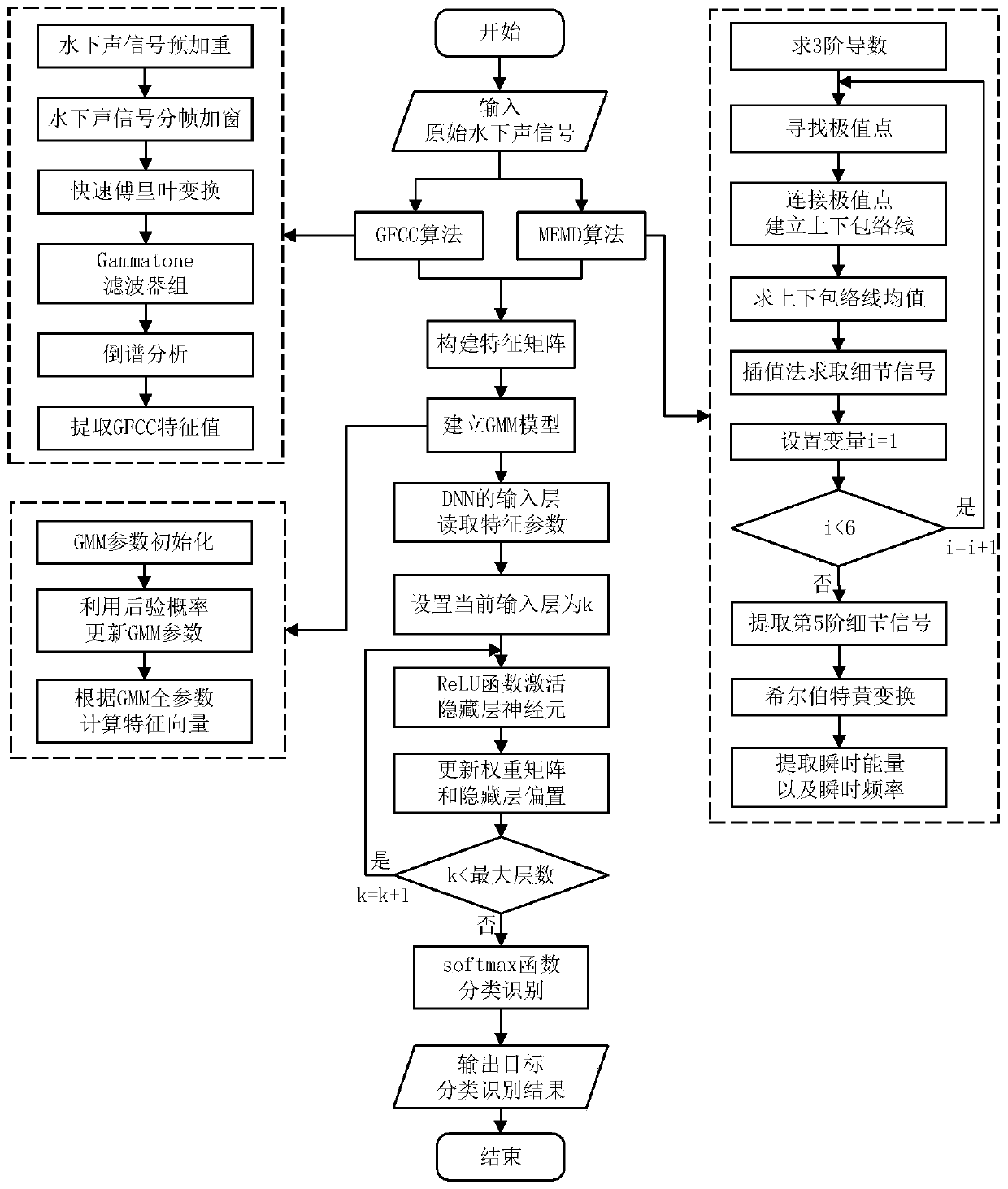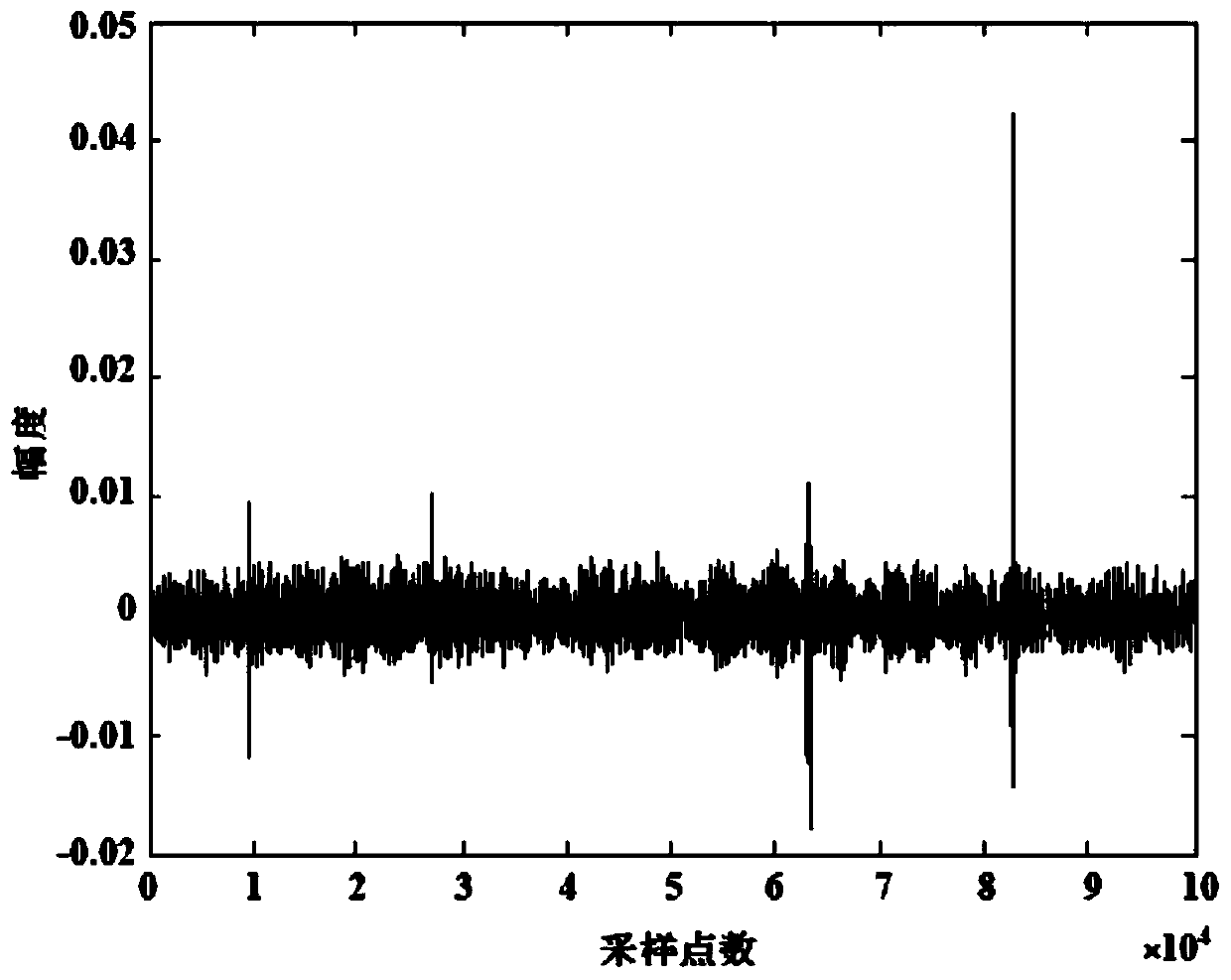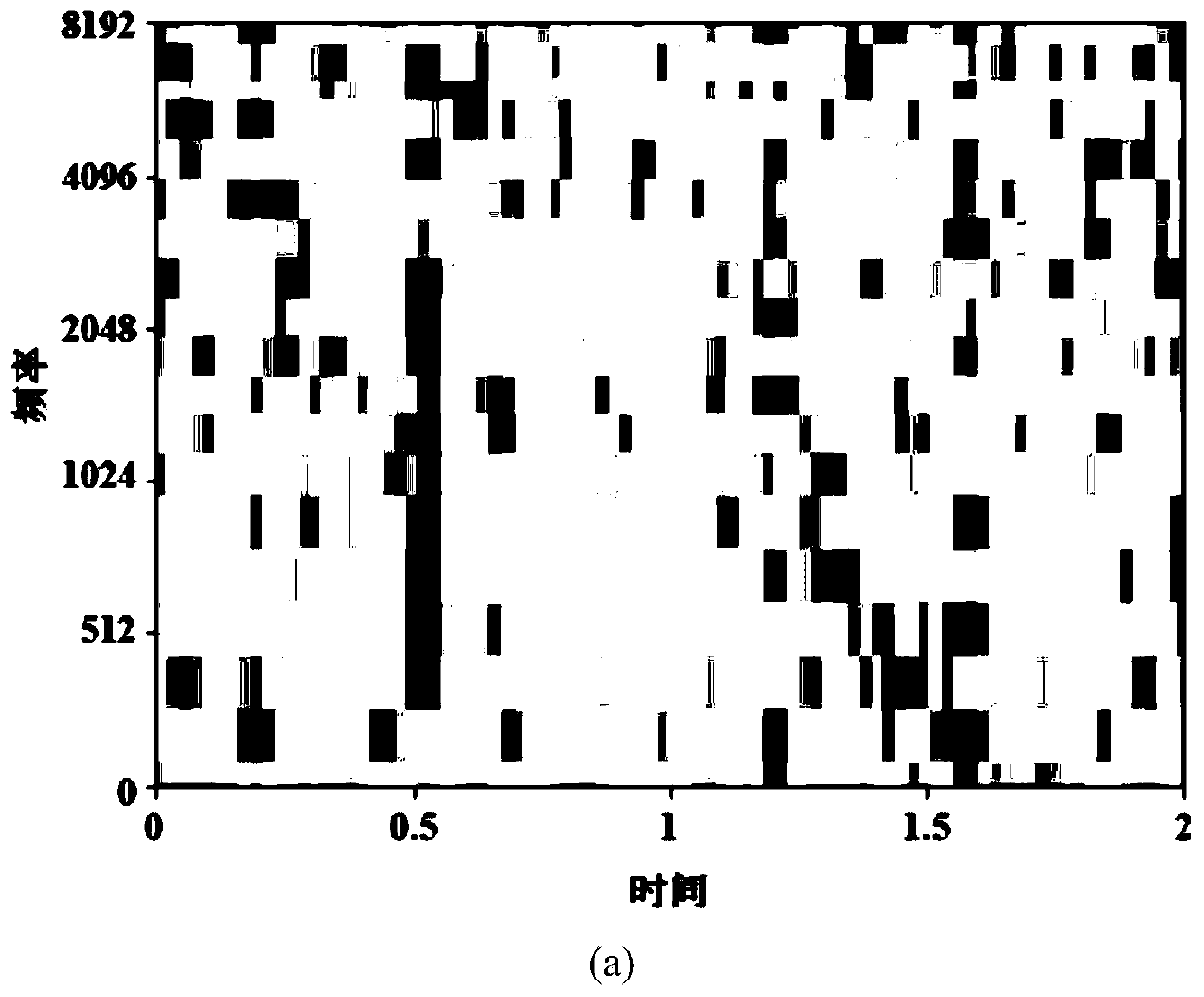Underwater acoustic signal target classification and recognition method based on deep learning
An underwater acoustic signal and target classification technology, applied in character and pattern recognition, instruments, biological neural network models, etc. problem, to achieve the effect of improving the accuracy and improving the robustness
- Summary
- Abstract
- Description
- Claims
- Application Information
AI Technical Summary
Problems solved by technology
Method used
Image
Examples
Embodiment Construction
[0037] The present invention is described in more detail below in conjunction with accompanying drawing example:
[0038] combine figure 1 , the concrete steps of the present invention are as follows:
[0039] (1) Use the GFCC algorithm to extract the features of the original underwater acoustic signal
[0040] The Gammatone filter is a causal filter with an infinitely long sequence impulse response. In the filter bank, the time-domain impulse response of each Gammatone filter i can be regarded as the product of the Gamma function and the acoustic signal, defined as:
[0041]
[0042] In the formula: n is the order of the filter, b i Indicates the attenuation factor of the filter, f i is the center frequency expressed in Hz, Represents the phase of the filter, u(t) is a step function, and N represents the total number of filters.
[0043] In the process of underwater acoustic signal feature extraction, in order to simulate the auditory characteristics of the human ear...
PUM
 Login to View More
Login to View More Abstract
Description
Claims
Application Information
 Login to View More
Login to View More - R&D
- Intellectual Property
- Life Sciences
- Materials
- Tech Scout
- Unparalleled Data Quality
- Higher Quality Content
- 60% Fewer Hallucinations
Browse by: Latest US Patents, China's latest patents, Technical Efficacy Thesaurus, Application Domain, Technology Topic, Popular Technical Reports.
© 2025 PatSnap. All rights reserved.Legal|Privacy policy|Modern Slavery Act Transparency Statement|Sitemap|About US| Contact US: help@patsnap.com



